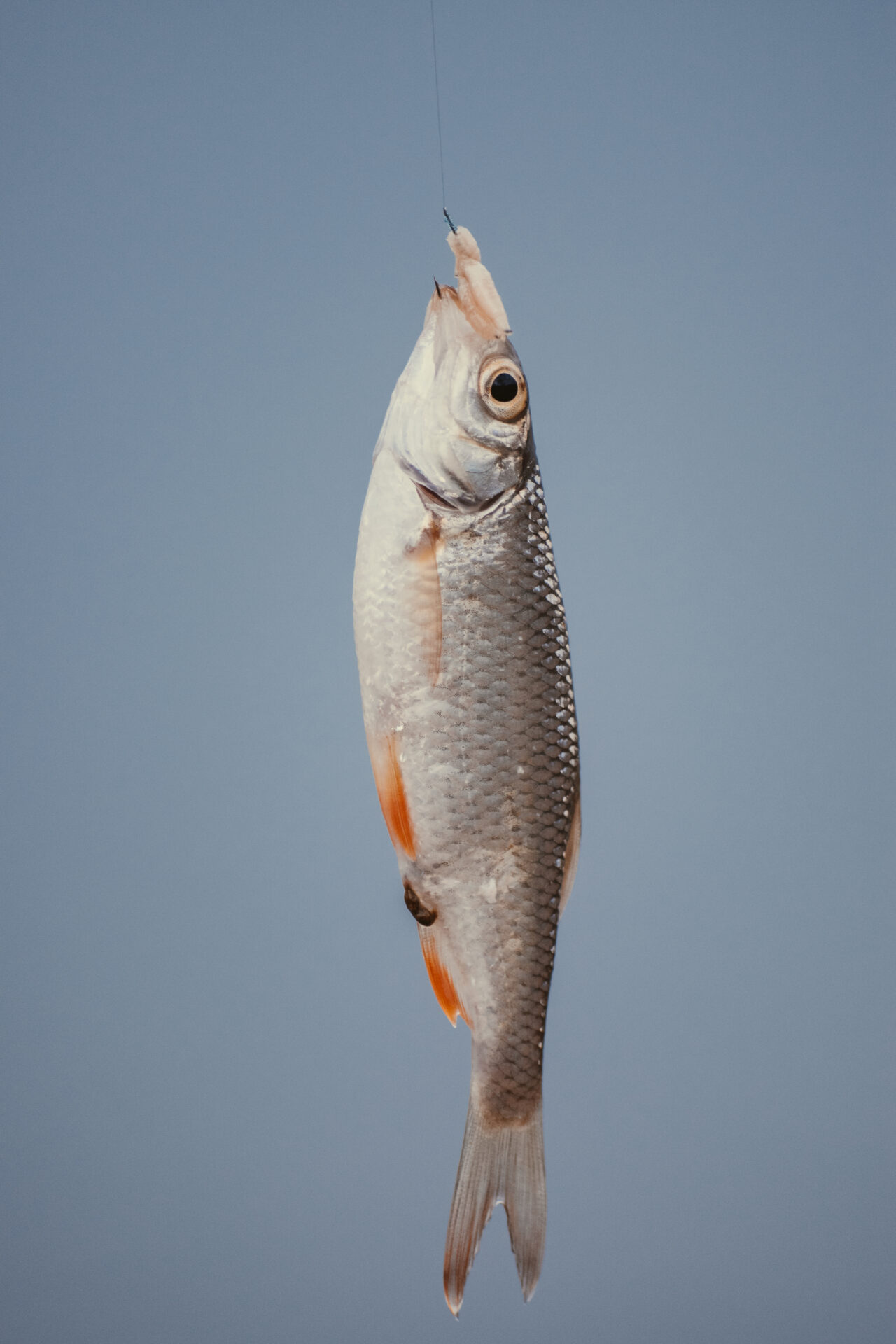Pickerel are a popular freshwater fish in many natural habitats, prized for their good taste and firm flesh. Catching pickerel can be a rewarding experience, and with the right techniques, it can quickly become a favorite pastime. Whether you’re a novice or experienced angler, the following guide to the best techniques for catching pickerel in freshwater can help improve your success rate. From understanding basic pickerel behavior to choosing the right gear and bait, we go over the basics of successful pickerel fishing.
Types of Pickerel
Pickerel are freshwater fish that belong to the family Esocidae. There are three major species of pickerel found in North America: the chain pickerel, the redfin pickerel, and the grass pickerel. All three species are known for their long, slim bodies and sharp, voracious appetite. While they all look similar and share many of the same habits, each species of pickerel has its own unique traits.
Chemical Sensitivity of Pickerel
Pickerel are very sensitive to the environment, and their chemical receptors will detect the presence of other fish, worms, and even food particles in the water. This sensitivity to their environment allows them to track down their preferred prey efficiently. The chemical sensitivity of pickerel is especially useful for anglers who are looking to target specific species of fish.
Techniques for Catching Pickerel
Catching pickerel requires a combination of patience, the right tackle and bait, and knowledge of the habits and habitats of the different species. The best techniques for catching pickerel involve using the right bait, casting in areas where the fish are most likely to be found, and using a light action rod with a spinning reel.
Using Live Bait and Lures
Live bait is often the most successful method for catching pickerel, as they will often strike at anything that moves and smells like food. Live bait can range from small bugs and minnows to crayfish and worms. Likewise, lures can be used to mimic the movements of baitfish and attract pickerel. Different species of pickerel will respond to different lures, so it is important to select the right size and color of lure for the type of pickerel you are targeting.
Types of Pickerel
Pickerel can be divided into three main species: the chain pickerel, the redfin pickerel and the grass pickerel. The chain pickerel is the largest of the three, and can grow up to three feet in length. It has a light olive-green or brown body with dark spots and a yellowish-white belly. The redfin pickerel is smaller, with a bright red underside, olive green back, and white spots. It is also a fast swimmer and can often be found in more shallow depths than other species of pickerel. The grass pickerel is the smallest of the three, with a dark green back and yellow-green sides, and is the most commonly found pickerel in North America.
Necessary Equipment
Pickerel fishing is an exciting way to test your skills, especially if you choose freshwater as your fishing ground. Knowing what gear is necessary for catching pickerel in freshwater is an important part of this endeavor. Here is what you need for a successful day of pickerel fishing.
Fishing Rod
A good quality spinning rod should suffice for freshwater pickerel fishing. The rod should be between 6 and 7 feet in length, with a medium to medium-heavy action. The length of the rod will depend on the size of the pickerel, as the bigger the fish, the more powerful the rod should be. A rod with a soft tip is essential to detect subtle bites and reduce snags.
Reel and Line
A light to medium spinning reel is ideal, as pickerel are hard fighters and can put quite a strain on the reel. The reel should be spooled with a quality monofilament fishing line between 6 and 10 pounds. Using heavier line than the recommended range can harm the pickerel’s mouth and make them difficult to release.
Lures and Bait
Pickerel are predatory fish and can be caught with both live and artificial baits. Live bait such as minnows, worms, and leeches can work well if you target pickerel in areas where they feed. As for artificial lures, spinners, trolling plugs, and jigs are popular options. Vary the size and type of the lures depending on the size and location of pickerel.
Other Tackle
Apart from the gear mentioned above, you need some other items for a successful pickerel fishing day. A landing net is essential for retrieving your pickerel from the water. Also, make sure to bring a pair of pliers and a pair of needle-nose clippers to cut and remove hooks. Plus, don’t forget extra hooks, sinkers, and line in case you need to replace any of these.
Pickerel can be a rewarding catch in freshwater, as they put up a good fight and taste great. With the proper equipment and techniques, you can bring home dinner and some exciting stories. Be sure to consult local regulations and stay up to date on fishing seasons for the best pickerel experience.
Bait Options
When fishing for pickerel in freshwater, there are many different types of lures you can use to attract the fish. Each lure varies in size, color, and shape, and will have different effects on the pickerel. To ensure that you have a successful fishing trip, it is important to choose the right type of lure for the job. Here are some of the most important bait options to consider when catching pickerel in freshwater:
Jigs
Jigging is one of the most popular methods of catching pickerel in freshwater. Jigs come in a variety of sizes, shapes, and weights, making them an excellent choice for targeting these fish. Jigs are designed to imitate prey items, such as crayfish or minnows, and can be used to attract pickerel in a variety of water depths.
Spinnerbaits
Spinnerbaits are a type of artificial lure that is designed to mimic the movement of baitfish. They are usually fitted with one or two blades that rotate when retrieved, creating a vibration in the water that attracts pickerel. Spinnerbaits come in a wide range of colors and sizes, making them a great choice for pickerel fishing in freshwater.
Crankbaits
Crankbaits are another type of artificial lure that is designed to mimic the look and movements of baitfish. The lure is designed to be retrieved slowly and in an erratic manner, which can be effective in triggering a pickerel to strike. Crankbaits come in a variety of shapes, sizes, and colors, making them a great choice for pickerel fishing.
Soft Plastics
Soft plastics, such as worms and grubs, are a great option for freshwater pickerel fishing. The flexibility of the plastic allows it to move naturally in the water, which can entice pickerel to strike. Soft plastics come in a variety of shapes and sizes, making them an excellent choice for targeting these fish.
Live Baits
Live bait is also an effective option when it comes to targeting pickerel in freshwater. Live bait, such as worms and minnows, can be used to attract pickerel in a variety of water depths. Live bait is a great choice for pickerel fishing, as it has the added advantage of being naturally scented, which can draw the fish in.
Using the right bait is essential for successful pickerel fishing in freshwater. Each of the different types of bait mentioned above can be used to attract and catch pickerel. By choosing the right type of bait for the job, you can increase your chances of catching these wonderful fish.
Locating Pickerel
To catch pickerel in freshwater, anglers need to first identify the best bait. Live bait such as worms, grubs, and minnows are popular choices, as are artificial lures such as spinners and jigs. When fishing for pickerel, anglers should consider what type of bait is most likely to attract the fish in their particular body of water. Many anglers also use larger baits, such as frogs, when they are trying to catch large specimens.
Choosing the Right Pickerel Fishing Spot
When searching for a good spot to fish for pickerel, anglers should look for areas with dense vegetation and cover, such as weed beds and logs. Pickerel are often found near the shoreline and in deeper water near drop-offs. While the choice of fishing spot will depend on the location, anglers should typically look for places with a strong current and plenty of cover or structure.
Understanding Pickerel Behaviors
Before attempting to catch pickerel, anglers should familiarize themselves with the behavior of these freshwater fish. Pickerel are generally active during the day and can be quite aggressive when it comes to feeding. They typically go after their food with a sudden burst of speed and can often be found around weed beds, logs, and other structures. By understanding the behavior of pickerel, anglers can better identify where they might be located.
Using the Right Gear
Once anglers have identified a good fishing spot, they need to choose the right gear for catching pickerel. A lightweight or ultralight rod and reel is typically used for the best results, as it allows for more finesse when trying to land these hard-fighting fish. Anglers should also select line and tackle that are appropriate for pickerel.
Finally, Set the Hook
Once the right gear has been selected and the ideal fishing spot identified, anglers should be ready to set the hook as soon as they feel a bite. Pickerel are known to be aggressive and strike hard, so anglers should be prepared to set the hook quickly and with a strong motion. With the right technique and gear, anglers can successfully catch pickerel in freshwater.
Fishing Tactics for Catching Pickerel
Pickerel, or walleye, are a freshwater species of fish that can be found in lakes, rivers, and streams throughout much of North America. They are an important recreational gamefish, and anglers spend countless hours trying to locate and catch them. In order to have the best chance at a successful fishing trip, you need to know the best places to target pickerel.
Pickerel tend to prefer weedy shallows and softer bottomed areas where they can find plenty food. These are usually located near drop-offs and deeper water. You can also find them around structure such as logs, rocks, or stumps. When you find a likely spot, cast your line near the edge of the structure or near the weeds and wait for a bite.
Bait Selection for Catching Pickerel
Baits that are commonly used to catch pickerel include artificial lures, live bait, and even flies. Artificial lures such as spinnerbaits, buzzbaits, and crankbaits are often effective, and these can be used in a variety of situations.
Live bait is also an effective choice and can be used in both shallow and deep waters. Worms and minnows are some of the most commonly used live baits. If you’re fishing in shallow waters, small crayfish are also a good option.
Finally, fly fishing for pickerel is becoming increasingly popular. While it does require more skill, the technique can be incredibly effective, and it’s a great way to enjoy a peaceful day on the water.
Fishing Tactics for Catching Pickerel
Now that you know the best places to target pickerel, and which baits to use, it’s time to talk about tactics. When using artificial lures, it’s important to vary your retrieval speed, as pickerel can be unpredictable. Cast your bait and reel it in at a slow, steady pace, and then sometimes speed up, or even slow down. You never know what technique will work best and the only way to find out is by experimenting.
When fishing with live bait, it’s important to keep your bait moving. This helps to attract the pickerel’s attention and can often be the difference between a successful and unsuccessful fishing trip.
Finally, when fly fishing for pickerel, it’s important to cast to the likely spots and try different techniques. You may find that some of the same techniques used while fishing with artificial lures also work with fly fishing.
Conclusion
Pickerel are a popular freshwater gamefish, and knowing the best places to target them, the best baits to use, and the right fishing tactics can be the difference between a successful and unsuccessful fishing trip. With the right knowledge and skill, you should be able to find and catch pickerel with ease.
Common Tips for Succeeding at Pickerel Fishing
Pickerel are some of the most sought-after freshwater fish around, and they can put up a good fight when hooked. Knowing the best techniques for catching pickerel can make the experience even more enjoyable. The most common practice for pickerel fishing is to move slowly and steadily along shallow shorelines and points. Use lures that mimic their natural prey, such as small minnows, frogs, and worms. Casting a bit further and being patient can help you increase your chances of catching a pickerel. Lastly, stay near shallow docks, weed beds, and logs, as pickerel love to hide in such areas. With these tips in mind, all anglers should be able to find success when it comes to pickerel fishing!





Leave a reply